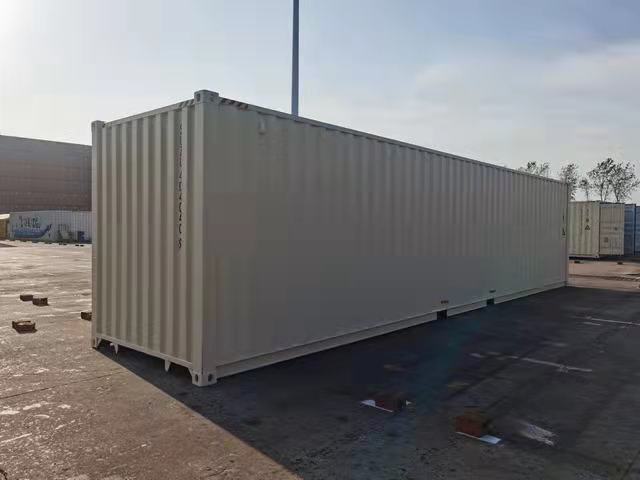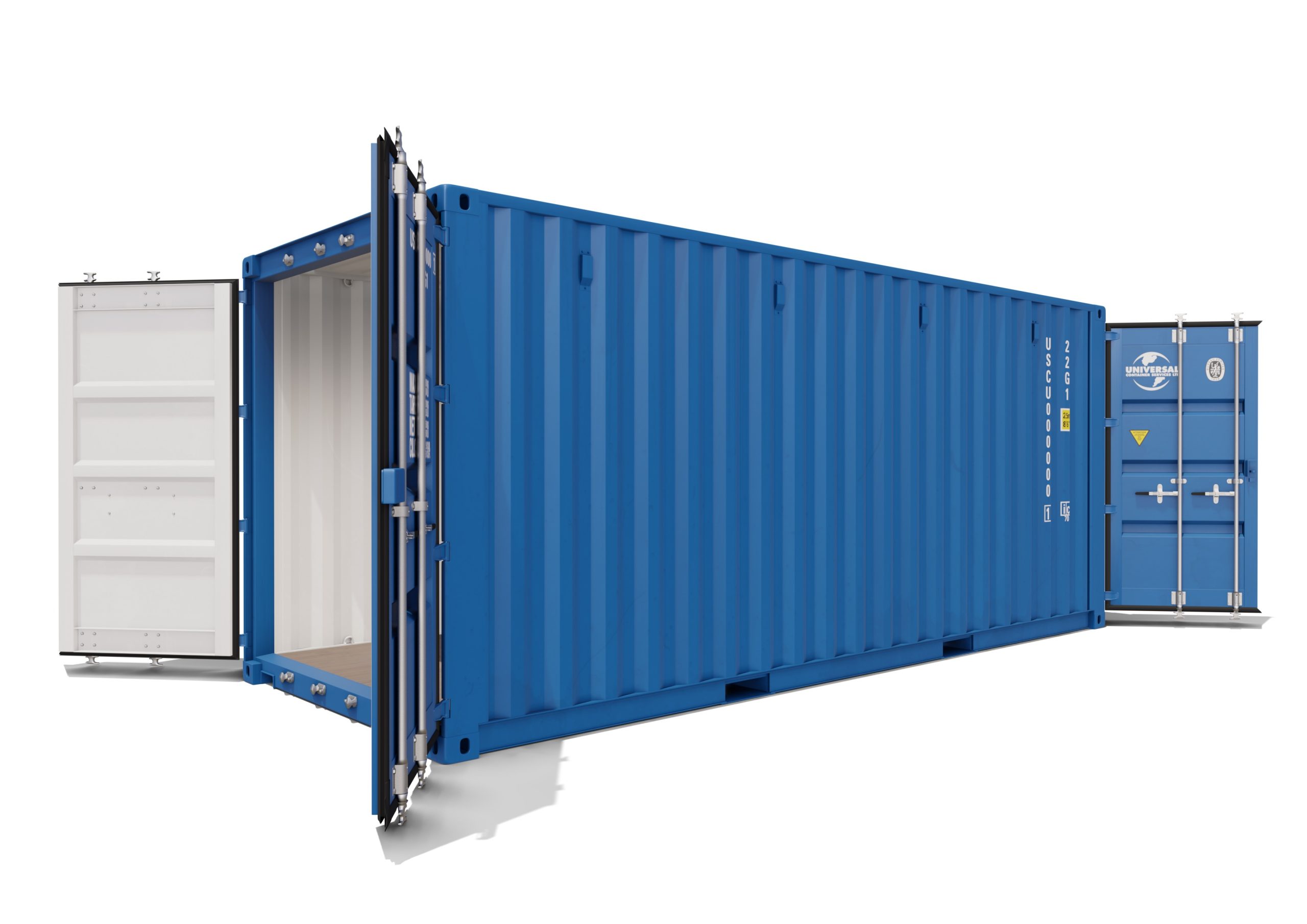The Ultimate Overview to Selecting the Right Delivery Container for Your Requirements
When it involves choosing the right delivery container, recognizing your particular demands is vital. You'll want to think about factors like dimension, type, and product to ensure you make the most effective selection. From conventional dimensions to specialized options, there's a whole lot to discover. Plus, budgeting for both the container and any kind of modifications can make a huge distinction. Let's damage down the vital facets to help you locate the best fit for your requirements.
Understanding Shipping Container Sizes
When you're selecting a shipping container, recognizing the different sizes readily available is essential for making the right choice. Delivering containers normally come in standard lengths of 20 and 40 feet, however you'll also find various other dimensions. Recognizing the size you need relies on what you intend to store or transport.If you're relocating smaller sized products, a 20-foot container may be excellent, while larger shipments often call for a 40-foot container. Keep in mind that the height can also vary; high cube containers use extra vertical area, which can be useful for taller goods - Lease New Shipping Container 40' x 8' x 9’6".Before choosing, determine your cargo, and think about just how much space you'll need for loading and unloading. Constantly aspect in potential future requirements-- going with a somewhat larger container might save you problem down the line. Ultimately, choosing the right dimension will certainly enhance performance and ensure your products are secure throughout transit
Sorts Of Shipping Containers Available
There are numerous kinds of shipping containers readily available, each created for certain objectives and freight needs. The standard completely dry container is functional, excellent for basic cargo. If you're delivering disposable items, consider a cooled container, which preserves a regulated temperature level. For large products, high dice containers supply additional elevation, suiting taller loads.If you need to move hefty equipment or equipment, level rack containers supply a tough base without wall surfaces. Open-top containers permit for very easy loading of tall freight, with a removable tarpaulin covering for security. If you're trying to find versatility, think about a collapsible container that can be conveniently kept when not in use.Lastly, specialized containers like tank containers are used for fluids, while vented containers are developed for bulk freight that requires ventilation. Recognizing your freight kind will assist you pick the right container to satisfy your shipping requires successfully.
Material Considerations for Toughness
When picking a delivery container, the material plays a crucial duty in its durability. You'll desire to evaluate the benefits of steel versus light weight aluminum, especially pertaining to rust resistance. Understanding these factors can help you make a much more educated option for your shipping requires.
Steel vs. Aluminum Containers
How do you pick in between steel and light weight aluminum containers for your shipping requires? Beginning by considering sturdiness. Steel containers are durable and offer outstanding stamina, making them excellent for hefty tons and harsh problems. They withstand damage from influences and are typically less costly, which can be a significant element for budget-conscious buyers.On the other hand, aluminum containers are lightweight, which can conserve you on delivery expenses. They're simpler to maneuver and are a wonderful option if you require to transfer products regularly. Aluminum is generally a lot more expensive and less robust than steel. Consider your specific needs meticulously, consisting of weight, cost, and the sort of freight you'll be delivery, to make the right selection for your situation.
Corrosion Resistance Variables
Picking the right material doesn't simply involve weight and expense; deterioration resistance plays a considerable function in resilience. When choosing a delivery container, consider the setting it'll deal with. Steel containers, while strong, can rust otherwise properly treated. Seek choices with protective coverings or galvanization to boost their life-span. Aluminum, on the other hand, provides natural corrosion resistance, making it suitable for coastal locations or moist conditions. Nevertheless, it can be extra costly. Additionally, assess the container's use-- if it'll be revealed to chemicals or extreme climate, focus on materials that can hold up against these problems. Buying a corrosion-resistant container currently can conserve you from pricey repair work or replacements down the line. Choose sensibly for long-term benefits.
Alterations and Customization Options
Delivering containers aren't simply for transferring products; they can be transformed to meet your particular requirements through various alterations and modification alternatives. You can transform a conventional container right into a cozy workplace, a momentary retail store, and even a personal gym. The possibilities are virtually endless.Think about including home windows, insulation, or ventilation to boost comfort. You could also consider electric circuitry, plumbing, or even custom shelving to improve performance. If security's a concern, reinforced locks can offer tranquility of mind.For visual charm, internet you can paint the container or include an unique design to make it stand apart. Do not forget flooring choices-- whether you want long lasting plywood or something much more innovative, it can raise the space.Ultimately, customizing your delivery container to fit your requirements can boost use and produce a distinct environment that reflects your style.
Analyzing Your Transport Needs
When it pertains to utilizing your changed delivery container, comprehending your transportation requires is crucial. Start by establishing what you'll be shipping-- whether it's heavy devices, retail products, or personal products. Each kind find this of cargo has different needs concerning size, weight, and accessibility.Next, think about the range and setting of transport. Are you shipping in your area, nationally, or internationally? This impacts the container's layout and functionality. If you're utilizing vehicles, guarantee your container fits basic measurements for easy loading and unloading.Additionally, believe about transit conditions. Will your things need special defense from weather condition or temperature level variations? If so, you might require insulation or air flow features in your container.Lastly, analyze exactly how frequently you'll be moving products. Constant deliveries may require a much more long lasting and functional container to satisfy ongoing demands. By attending to these aspects, you'll be well-prepared to choose the right shipping container for your demands.
Budgeting for Your Delivery Container
Establishing an allocate your shipping container is crucial for making certain a smooth acquiring process. Initially, figure out how much you can afford to invest. Costs can differ considerably based on size, problem, and type. New containers usually set you back extra, but made use of ones can offer substantial savings.Next, think about any kind of added prices you might incur, such as transportation fees, shipment costs, and adjustments. If you plan to personalize the container, factor in those costs as well. Study different providers to compare rates and locate the finest bargain that meets your needs.Don' t forget to include any authorizations or policies that may relate to your purchase and use the container. By clearly describing your spending plan, you'll be better prepared to make enlightened decisions, guaranteeing you obtain the right container without damaging the bank.
Maintenance and Look After Longevity
To ensure your delivery container lasts for many years, regular upkeep is essential. Start by examining the outside for corrosion, damages, and damages. If you detect any kind of issues, address them immediately to avoid additional wear and tear. Tidy the container periodically, both within and out, to get rid of dirt, debris, and wetness that can cause corrosion.Ensure the doors secure properly and oil the joints to avoid rust and sticking. If you're using the container for storage space, consider adding air flow to lower humidity and mold and mildew growth. For added security, apply a rust-inhibiting paint or sealer annually.If your container's situated in a severe atmosphere, like coastal areas, you could require to enhance upkeep frequency. Keep an eye on the floor covering, as well; any indicators of wear should be fixed today. With these basic actions, you'll extend the life of your shipping container look what i found substantially.
Often Asked Inquiries
How Do I Locate a Dependable Shipping Container Distributor?
To locate a dependable shipping container vendor, beginning by investigating online testimonials, requesting recommendations from buddies or industry contacts, and contrasting rates. Constantly inspect their credentials and warranty they use high quality containers that fulfill your demands.

Can I Rental Fee a Shipping Container As Opposed To Acquiring?
Yes, you can most definitely rent a delivery container instead of getting one. Numerous vendors supply rental options, which can conserve you cash and provide adaptability if you only need it for a brief period.
What Allows Are Needed for Container Placement?

Are Delivery Containers Weatherproof and Ideal for Outdoor Storage?
Yes, shipping containers are typically weatherproof, created to endure severe problems. Their durable building maintains your items safe and secure and dry, making them suitable for outdoor storage space. Simply ensure proper ventilation to avoid moisture accumulation inside.
Just how Do I Deliver a Shipping Container As Soon As Purchased?
